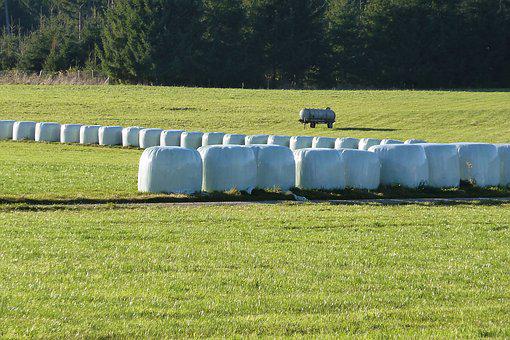Introduction to the challenge addressed
Grassland-based feeds are scarcely used as an impaired growth and slaughter performance is expected due to their limited energy density. However, using grassland-based feeds complies better with the ruminants' ability to convert non-digestible biomass for humans into high-quality protein. Therefore, the aim of this study was to investigate the extent to which the proportion of grass silage can be increased in the diet of intensively fed beef cattle and to quantify how carcass and meat quality are concomitantly affected.
Description of the innovation
Diets with 100, 300, 500 or 750 g grass silage/kg dry matter replacing maize silage and concentrate were tested with or without dried corn-cob mix (CCM). Performance, carcass and meat quality were studied in 30 Limousin-sired bulls. Feeding grass silage, CCM, and concentrate in a ratio of 500:300:200 allowed to maintain a similar animal performance, carcass and meat quality compared to a conventional maize silage/concentrate diet. Increasing the dietary grass silage proportion to 750 g/kg decreased the shear force of the meat. The proportion of n‒3 fatty acids in intramuscular fat increased with dietary grass silage proportion. Consequently, a strategic combination of grass silage with energy-rich forages may facilitate grassland-based feeding strategies in intensive beef production with favourable meat fatty acid profiles and a performance comparable to that with maize-silage based diets.
Impact on farm performance
The dietary level of grass silage for fattening bulls can be raised to 500 g/kg diet DM without impairing growth performance, while the slaughter performance was maintained for a diet even containing 750 g/kg grass silage. However, the growth performance was only maintained with 500 g/kg grass silage when complementing this diet with corn-cob mix (CCM) a particularly energy dense forage.
Two lessons can be learnt from this innovative practice:
- Harvesting the grass silage at the optimal development stage and with high conservation quality may increase the suitability of dietary grass silage for fattening bulls.
- Increasing the dietary proportion of grass silage reduces growth and slaughter performance, but this decline can be completely or partially avoided by replacing the remaining maize silage by a more energy-dense forage such as corn-cob mix (CCM).
The socio-economic impact of this innovation is the possibility to dispose of lower cost feed rations without compromising the productive performances and the meat quality of beef cattle.
Further information:
https://doi.org/10.1016/j.meatsci.2022.108795
M. Keller, M. Kreuzer, B. Reidy, et al., Effects on performance, carcass and meat quality of replacing maize silage and concentrate by grass silage and corn-cob mix in the diet of growing bulls, Meat Science (2021)
Author: Kees de Roest – CRPA


